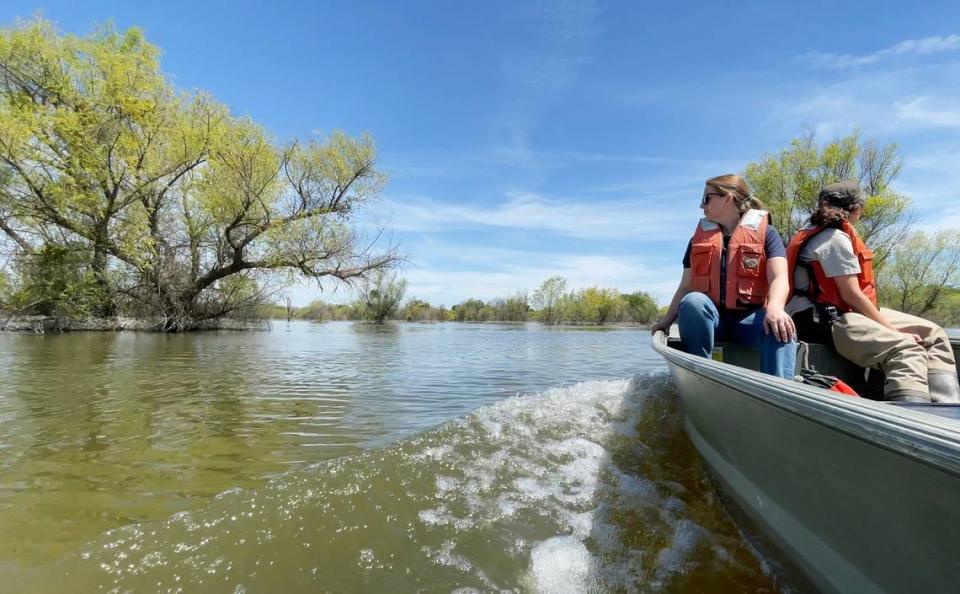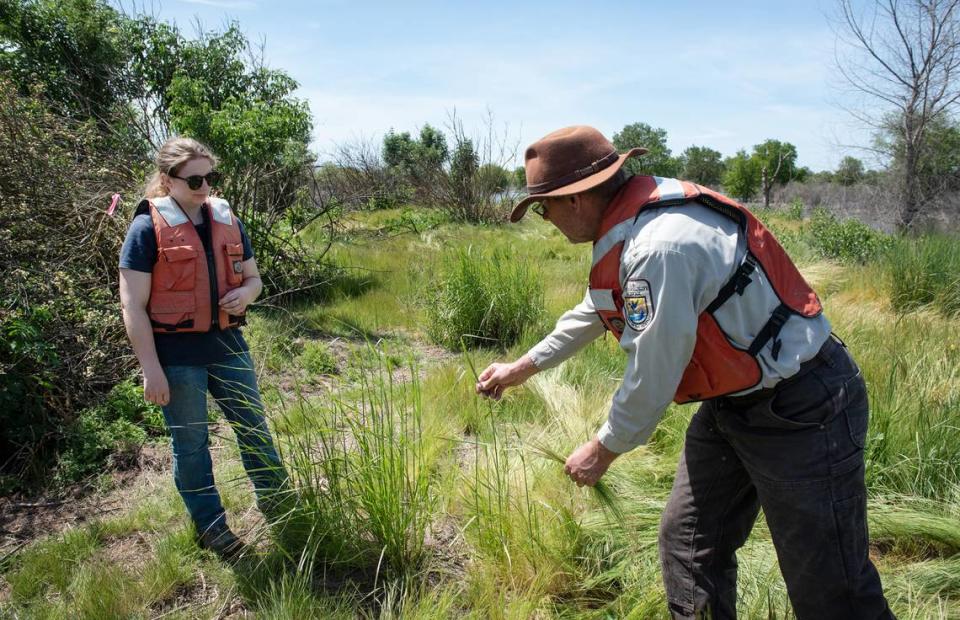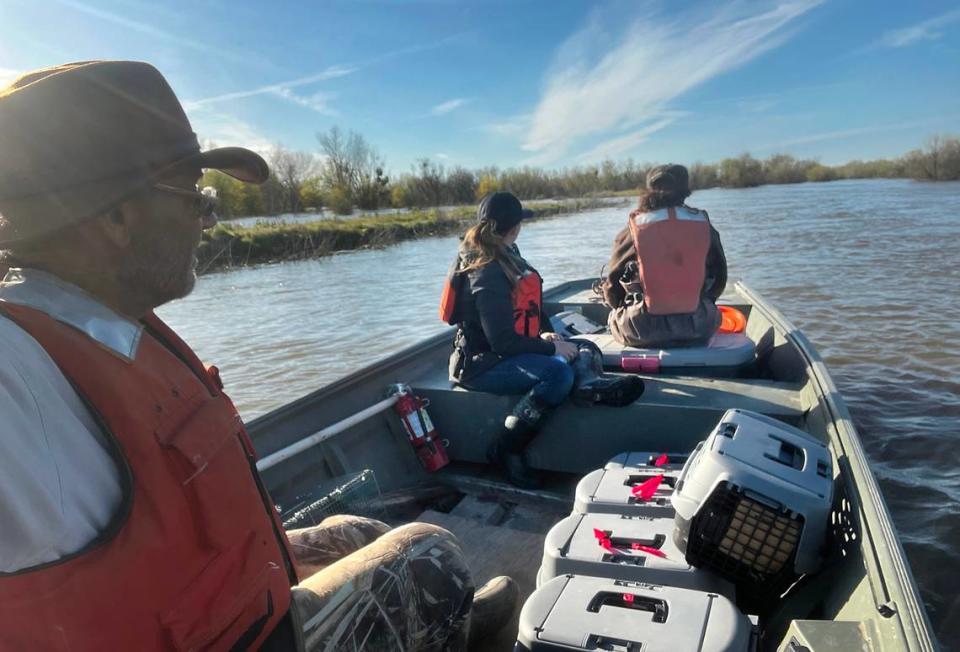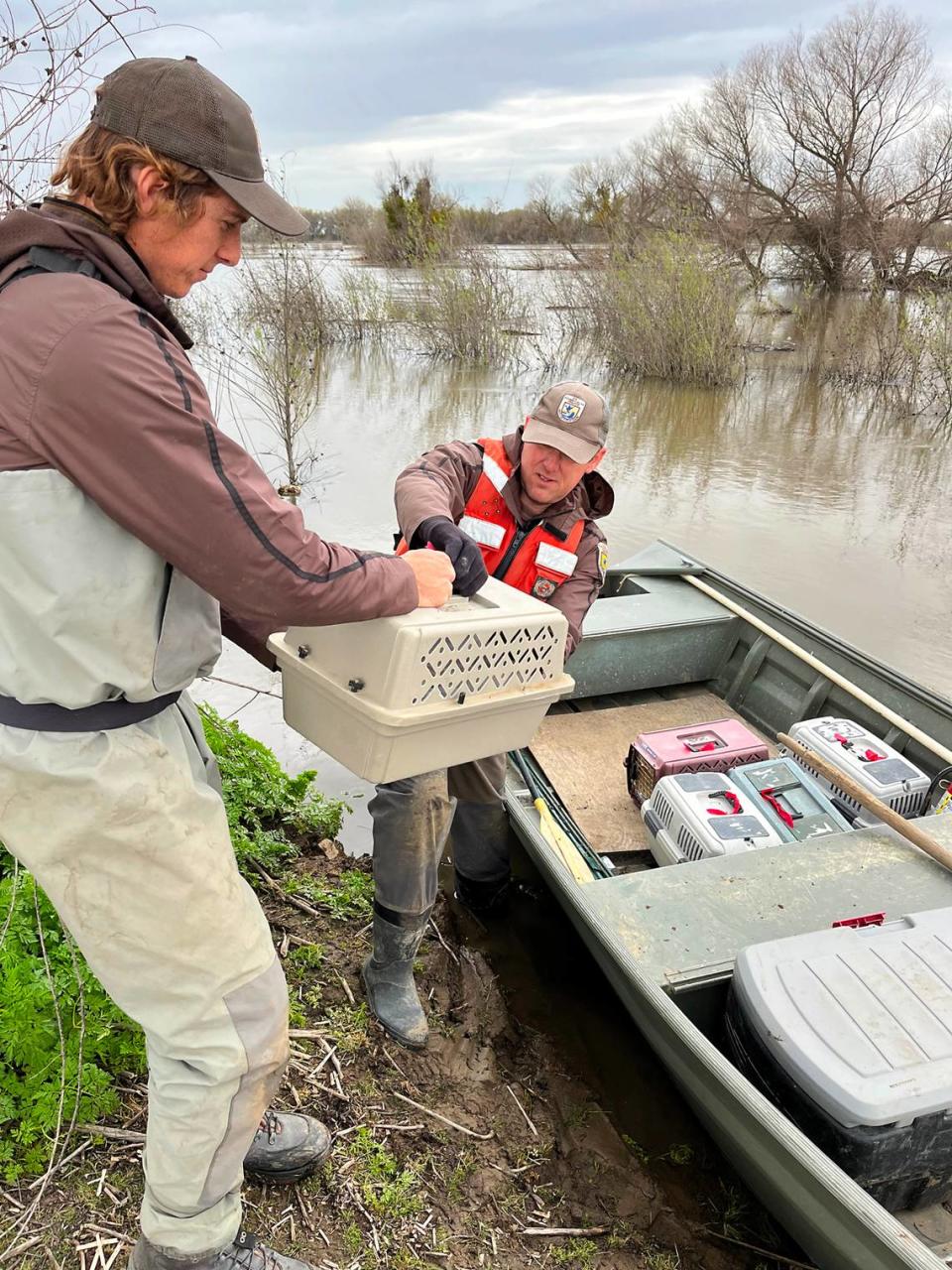Flood threatened rabbit species west of Modesto. How experts plucked the animals to safety
Fumika Takahashi recalled a gray January day when she set out to rescue rabbits.
The federal wildlife biologist kayaked along the lower San Joaquin River, which had risen close to the treetops. She and other experts hoped to find a rare species called the riparian brush rabbit.
“The floodwaters came up very quickly, so a lot of the rabbits were stranded in trees, or on logs and floating debris, because there wasn’t enough time for them to make it to high ground,” Takahashi said Friday afternoon.
She works for the U.S. Fish and Wildlife Service, which ended up catching about 100 rabbits in January with help from other entities. About 180 more followed as the storms continued into March, relocated to land less prone to flooding. A few died.
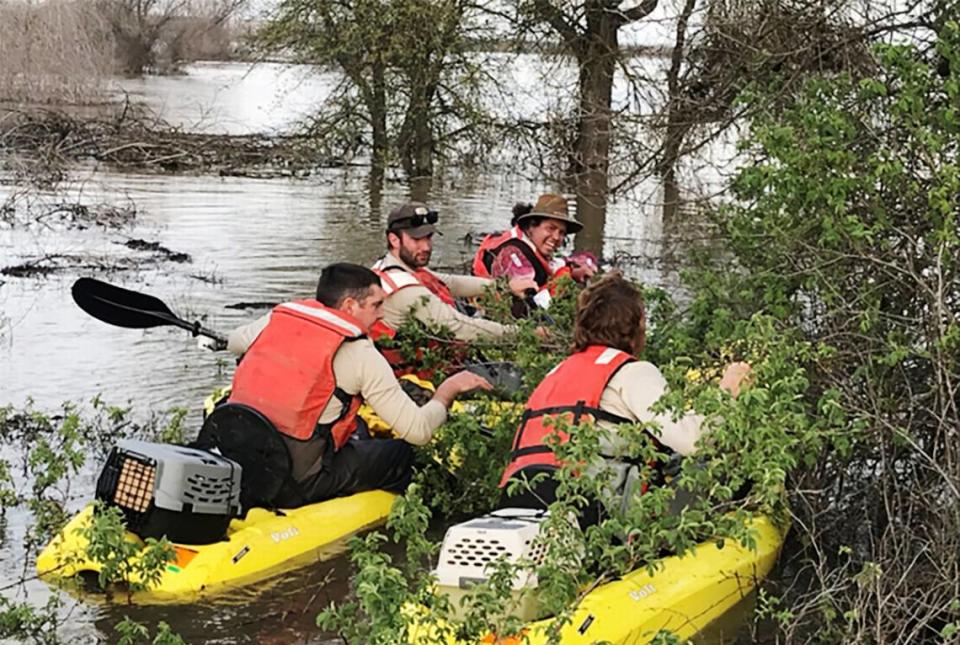
The rescue took place at the San Joaquin River National Wildlife Refuge. It stretches across about 7,500 acres in Stanislaus and San Joaquin counties.
Takahashi gave The Modesto Bee a tour along with refuge manager Eric Hopson and Haley Mirts, a restoration ecologist with River Partners. The nonprofit aided the rescue as part of its mission to restore floodplains around California.
Happy ducks and geese
Hopson said flooding generally benefits wildlife in the refuge. Ducks and geese have plenty of water surface for floating and feeding. Newly hatched salmon eat aquatic insects and other food to prepare for a few years in the Pacific Ocean.
But the rabbits depend on higher, drier ground for their diet, mainly grasses, and for protection from predators. The Northern San Joaquin Valley is the only place on Earth where this specific type of brush rabbit lives.
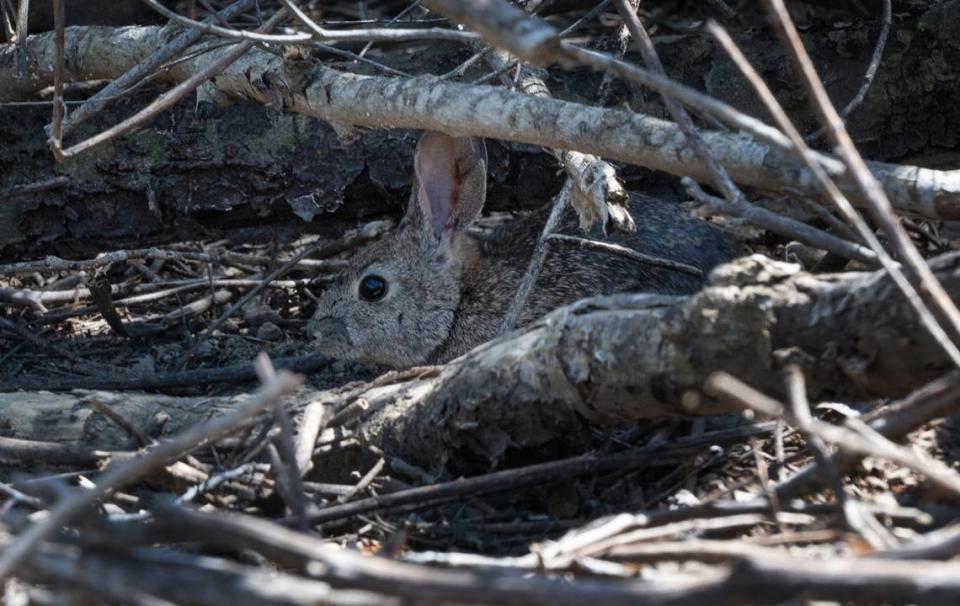
Biologists feared that they were going extinct in the 1990s, so they went on the federal Endangered Species List. They have recovered somewhat thanks to captive breeding and habitat restoration.
Today, an estimated 1,500 to 2,500 rabbits survive, toward a goal of 3,000 to 4,000. Some live at the refuge. Others are at Dos Rios Ranch, where the Tuolumne River joins the San Joaquin, and at Caswell Memorial State Park on the Stanislaus River.
Safety on higher ground
The refuge has about eight miles of former farm levees that provide some of the drier upland habitat. Hopson drove along some of them during the tour, with a caveat to his guests that the animals tend to hide until nightfall.
In recent years, the refuge increased rabbit habitat by building small mounds above the water level. The visitors got out to one of them on a 16-foot boat with an outboard motor. It is roughly an acre and planted with vegetation offering food and shelter.
Some of the rescues were on the mounds. Mirts and Takahashi described how they trapped rabbits in small cages baited with corn, alfalfa and molasses. They joined the treetop evacuees on higher ground at the refuge.
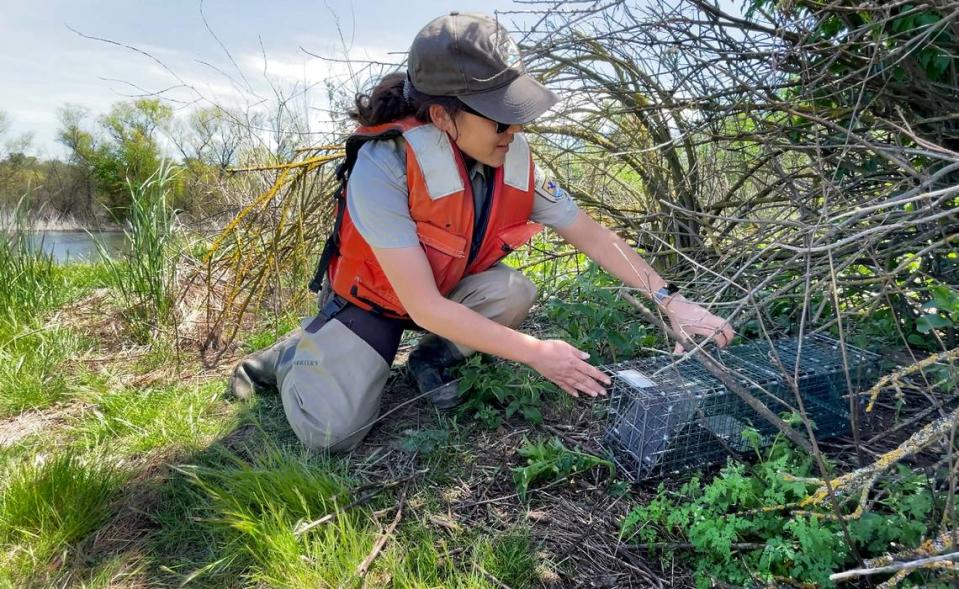
Hopson said the rabbits can survive most floods on their own, but 2023 was especially large. And the river is likely to run high well into summer as the massive Sierra Nevada snowpack melts.
Mirts remembered kayaking near the tops of 20-foot trees in January. “As these rabbits are getting washed away, they’re just grabbing onto whatever they can get hold of to settle themselves,” she said.
Even before the 2023 flood, the animals were at risk from summer wildfires more damaging than the gentle fires of old. And they have contended with rabbit hemorrhagic disease, a fatal virus, so were vaccinated as part of the rescue.
Stanislaus State plays a role
Part of the credit for the rabbit rebound goes to the Endangered Species Recovery Program at Stanislaus State University. State agencies and the Oakland Zoo have pitched in, too.
Hopson said the refuge’s annual budget covered the cost of the rabbit rescue. Over the long term, he hopes to expand the acreage to give the river more room to spread.
“It’s a short-term, stopgap measure,” Hopson said of the rescue. “We don’t expect to be out here trying to save rabbits every time there’s a flood in the future.”
The expansion would come through both purchases from willing land owners and agreements to farm in wildlife-friendly ways.
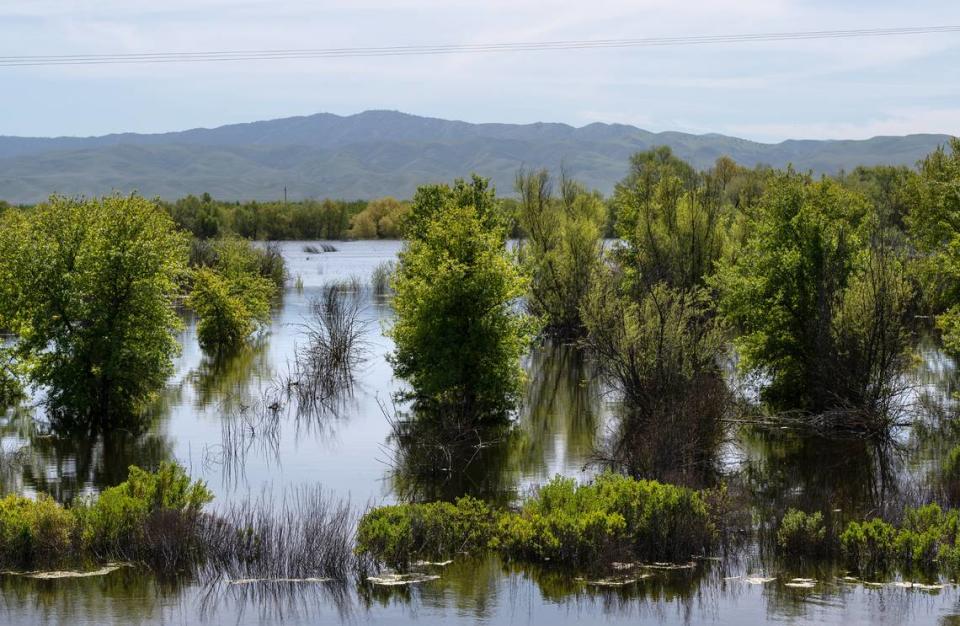
Most of the refuge is former cropland planted in native trees, shrubs and grasses. Levees were breached in places to mimic the flooding of past millennia. In dry years, the refuge also relies on water stored in reservoirs.
On Friday, the San Joaquin ran about 1.5 feet below flood stage as measured at Vernalis. That’s still well above average, but not enough to damage Manteca and other levee-protected towns downstream.
Can the public see them?
For now, the public has limited ways to see riparian brush rabbits. The refuge could be closed until July to allow repair of flood-damaged trails. Part of Dos Rios could be a state park by year’s end, but details on visiting have not been announced. Caswell is open but muddy in places, too.
Bunny-watchers should not mistake the riparian brush rabbit for two more numerous species in the area: the desert cottontail and the black-tailed jackrabbit. The brush rabbit is smaller and has a more uniform grayish-brown color.
